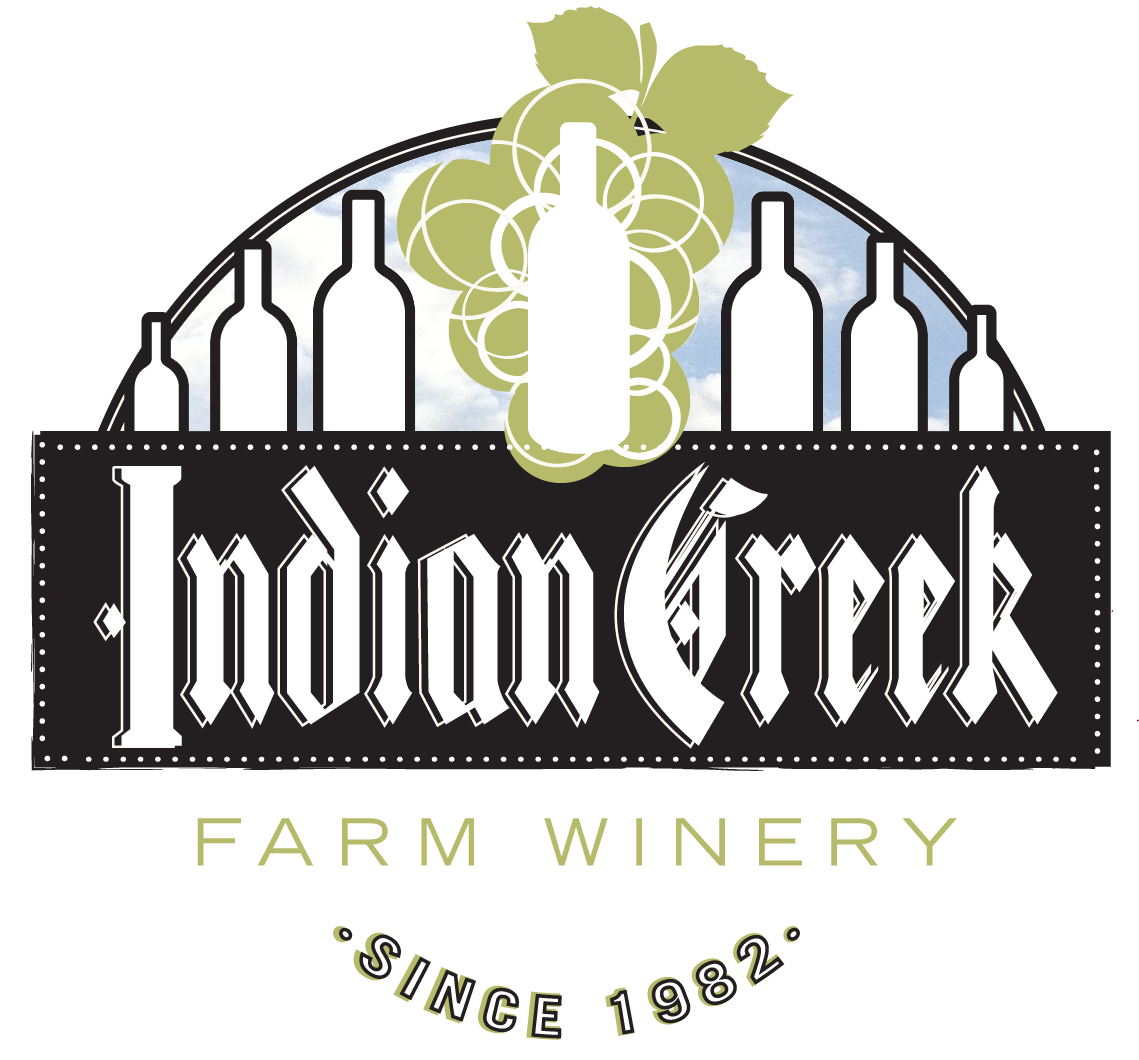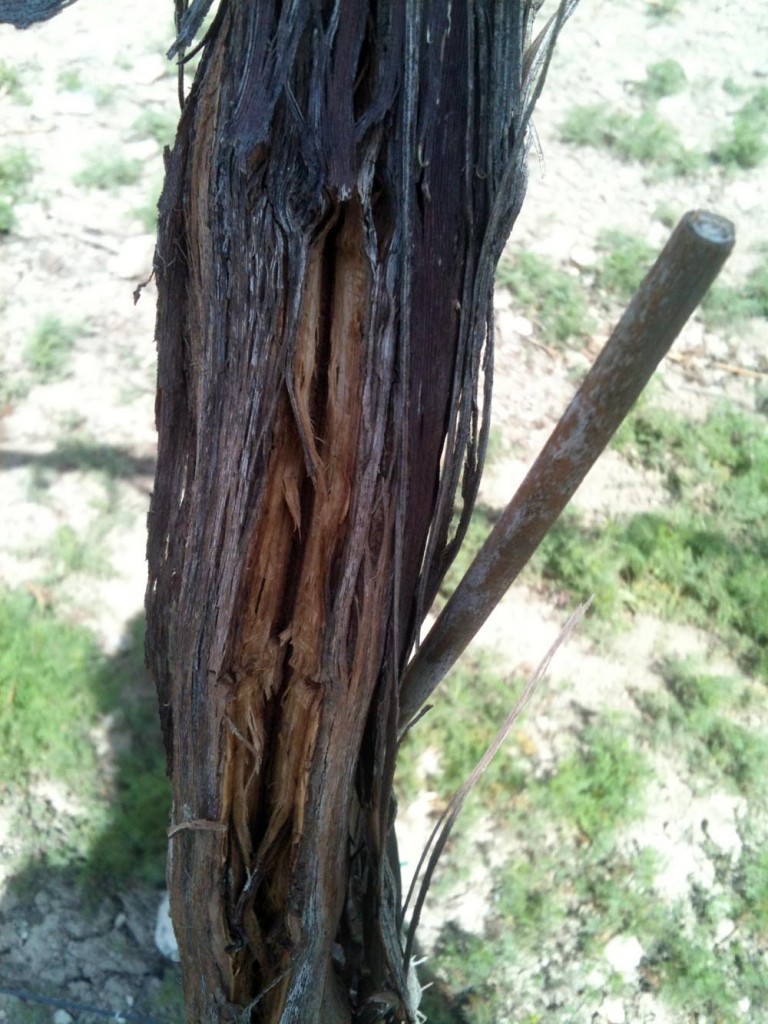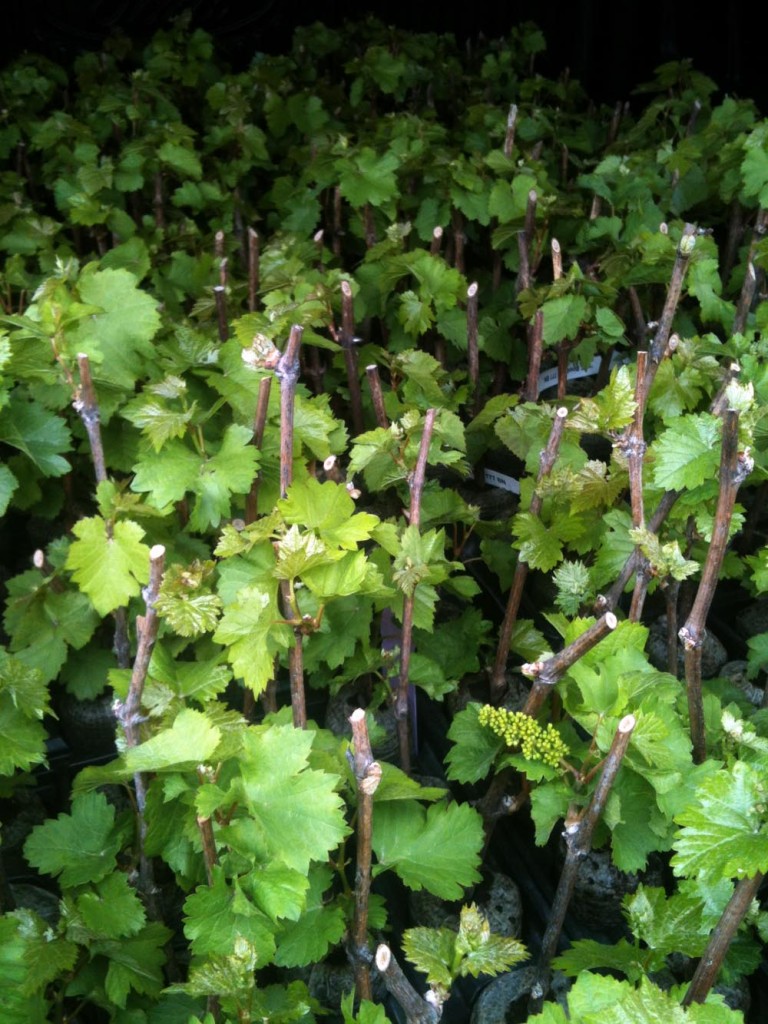Pre-Harvest Update
Yesterday, September 16th, marked the first day of harvest for the 2012 vintage at Indian Creek! While it is not quite the earliest we have ever harvested, it is 1-2 weeks ahead of “normal”. It always confuses me when farmers use the term “normal” when talking about the weather. It seems the weather is rarely regular year to year and therefore never “normal”. Maybe I should say that we are about 2 weeks ahead of the “average” harvest date. With harvest upon us,I thought I might take a moment and do a recap on this years growing conditions that lead to this earlier than normal…er uh average…harvest.
Last years late harvest meant the vines went into dormancy slightly water starved, this is never good. Although the fall gradually faded to winter and winter was fairly mild, we did lose a few vines. This is one of the major issues we deal with growing grapes in Idaho. The last major hit was 2007, when we lost about 80% of the entire vineyard to winter damage. Luckily, this year the numbers were not nearly that severe. In fact we lost only a small percentage (~5%) of Pinot Noir and Chardonnay
A Chardonnay vine with winter cold damage. This one had a split up the entire trunk.
Spring decided to make it’s appearance fast and early in 2012. Usually too early of spring means early growth on the vines. This can be good but can also spell disaster as it puts the vines at risk of a spring frost. Luckily we made it through the spring frosts and had an official “bud break” date of April 21st, a week ahead of average, 2 weeks ahead of the most recent 5 year average and an amazing 3 weeks ahead of last year!
Muscat Canelli during bud break
Through May and June we cut out the plants that were killed by the winter cold and replanted a few vines. The majority of plants affected by winter damage come back from the roots strong and fast, giving a full crop load the following year. Although, there are a few that die completely. The Stowe Vineyard is now 30 years old and many of the old vines just cannot stand up to the winters as well as just dying of old age. This means we must replant a few missing plants every year. Usually we focus in blocks or sections of the vineyard and this year we chose to focus on our Dijon clones of Pinot Noir. While the winter killed vines will bounce back by next year, the new plants take a minimum of three and up to five years to begin producing…ah, the patience you need in the wine business.
Baby Pinot Noir! These should be produce fruit by 2016 and will be in the bottle by 2018.
New “baby” vines are marked by small white tubes. These keep weeds from out-competing the vines as well as trap in moisture.
The early spring gave us a nice head start to the summer and growing conditions through the summer were near perfect. Warm days, cool nights. There was a bit of heat going on in June during bloom and fruit set which led to a bit of what we call shatter. This means a slightly lower yield in some varieties but nothing to complain about really.
The farmers that we are, we are always comparing the current vintage to “normal” (or was that “average”?) 2008 was a very, VERY good year for us and it has become somewhat of a benchmark vintage. 2009 was a bit warmer but just as good, 2010 was on par but a bit of a shorter season and 2011 was much cooler (in fact the coolest since 1993!). It’s interesting to compare the growing degree days (a heat unit measurement based on temperature and length of season) of this year to previous years. In fact, we in the Snake River Valley AVA are lucky enough to have such data at our finger tips: http://tinyurl.com/8lh27sz
As you can see from the graphs, the summer has ended warm and it’s looking like everything will ripen easily this year. One concern I have had with the heat hanging around into harvest is the grapes loosing acidity before they ripen fully, throwing the finished wines out of balance. Luckily though, the nights have been cooling down in to the 40s every night, preserving the precious acidity and the numbers I have been checking in the vineyard (sugars, pH and total acidity) seem better than ever. This is looking to be one of those vintages we remember for a long time, and very well could be a new benchmark vintage!




